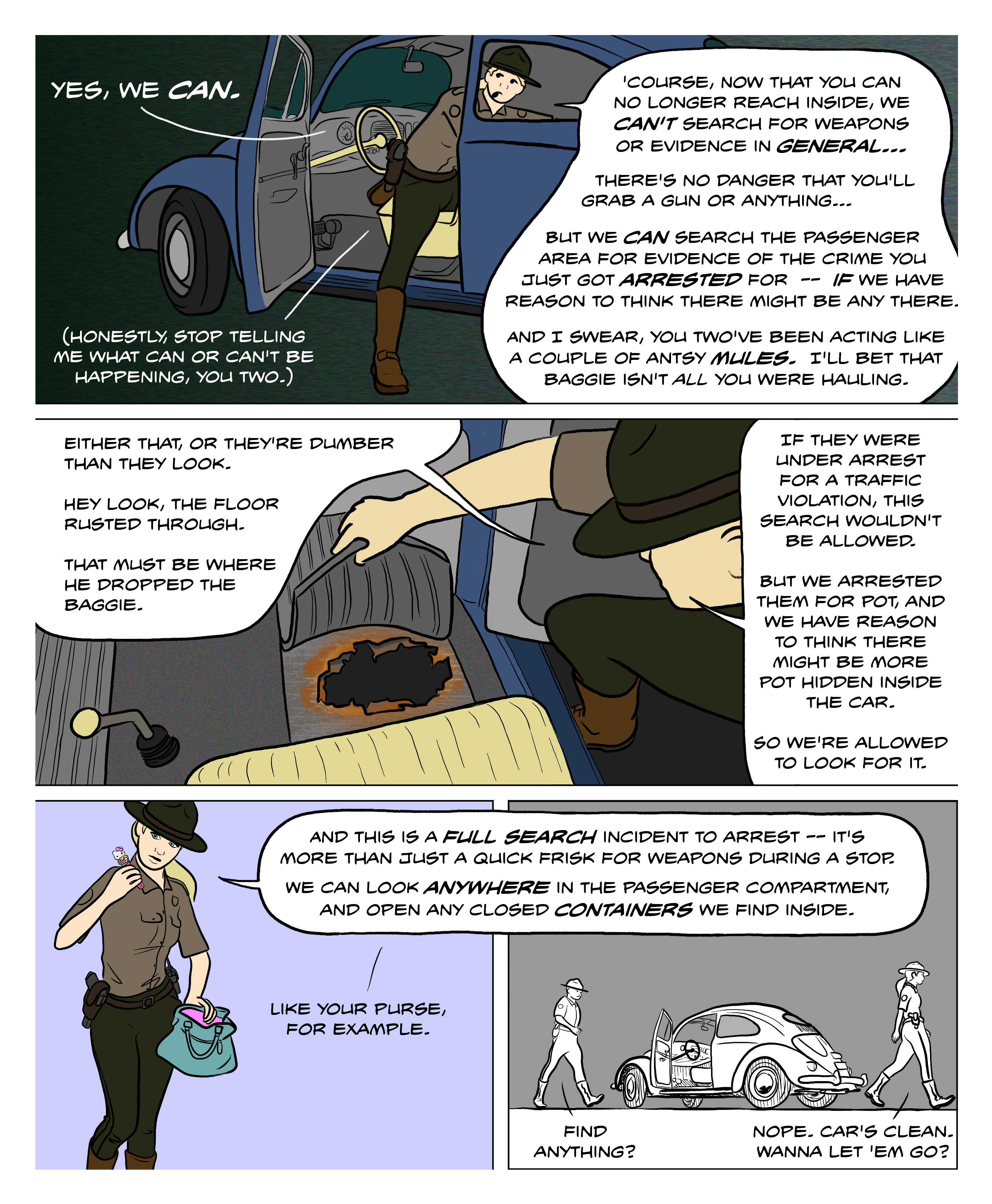|
This is a purely educational website. Nothing here is legal advice or creates or implies an attorney-client relationship. If you have a specific legal issue, PLEASE talk to a lawyer who practices where you live—laws vary from place to place, and how they're applied varies from courthouse to courthouse. Your local county bar association can probably refer someone who handles matters like yours.
By using this site, you agree that you are awesome. Use of this site also constitutes acceptance of its Terms of Service and Privacy Policies, which are known to medical science as a cure for insomnia.
It's best to keep all discussions in the comments. But if you really need to reach Nathan privately, go ahead and email him at n.e.burney@gmail.com. He won't mind.
THE ILLUSTRATED GUIDE TO LAW and the PEEKING JUSTICE logo are pretty damn cool trademarks and should probably be registered one of these days.
© Nathaniel Burney. All rights reserved, though they really open up once you get to know them.
|
|






Wasn’t that decision overturned a couple years ago?erroneous reference was fixedGoddammit yes. I am fully aware of Gant, had actually scripted this accordingly… and screwed it all up by trying to crank this out in the middle of the night off the top of my head. Dammit dammit dammit. Will fix this after work.Thank god for class participation, is all I can say. And mea maxima culpa.erroneous reference was fixedI’ve been there.
Fixed.
Raen, you just earned yourself a free shirt from the alumni store. Email me your size and where you want me to deliver it.
Can’t believe it took me this long to realize, but is ol’ Blue a reference to a car driven by a certain wizardly private eye?
I don’t know, it’s missing the multicolored doors and other “features”.
Is there no image because of Raen’s comment, i.e. it was taken down?
Yeah, it was bad info, I’ll be putting it back up after I get home and fix it.
I’m confused as to the reason the cops are allowed to search the passenger area of the car, but are not allowed to search the trunk. If the justification for searching the passenger area is to find evidence of the crime they were arrested for, why doesn’t that also apply to the trunk? Is it just that the passenger area was “near” reach at the time of arrest, while the trunk is not, or is there some other principle at work here?
I just asked on a previous page, but perhaps because the trunk counts as a locked container. (You need keys to open it and there was no passenger inside it.) Hopefully, he’ll clarify.
One would hope there’s no passenger inside! Pretty sure that’d be a flagrent MV violation, and depending on context, could invite an unwelcome visit from ICE.
So finding a small amount of contraband on someone gives you probable cause that they’ve got more? Looks like the D&D players got off lightly after all; they could have had their whole house torn apart.
hey, if the police find a locked box during the search and break it open to search it, can you get them to pay for the box/lock they’ve broken? those can be expensive.
Is “passenger” compartment meaning – the actual passenger seat location? or does passenger compartment refer to anywhere people in a car (passengers) could sit
In general, the passenger compartment of a car is the interior portion of the car where the people sit. It is that entire chamber—not just the seats, but also the floor, dashboard, door pockets, cup holders, center consoles, eyeglass compartments, etc. etc. It does not include the trunk, the engine compartment, the undercarriage, the wheels, etc.
Of course, as with everything else in the law, it’s not always so cut-and-dried. What’s the passenger compartment of a motorcycle, for example? Would the entire interior of a minivan count? Is a contractor’s work van any different? What about a hatchback where the back could be a trunk or an open space depending on whether it’s covered? What about one of those RV tops for a pickup truck? What do you think?